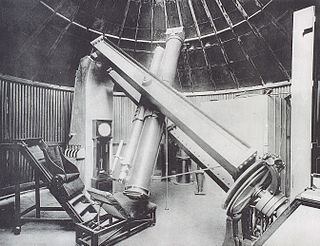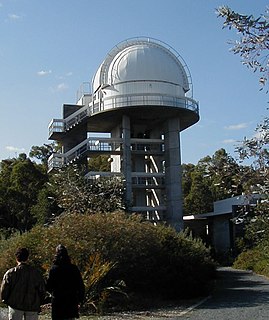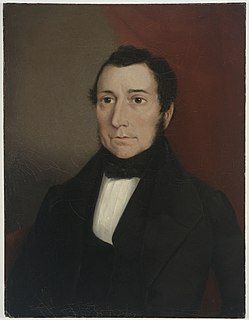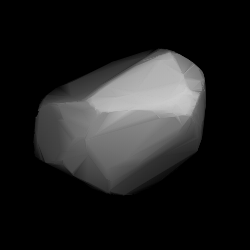This article relies largely or entirely on a single source .(July 2021) |
The Tokyo Photoelectric Meridian Circle (PMC) is a meridian circle that observes and records the positions of stars and planets, which are then reported in the PMC catalogs.
This article relies largely or entirely on a single source .(July 2021) |
The Tokyo Photoelectric Meridian Circle (PMC) is a meridian circle that observes and records the positions of stars and planets, which are then reported in the PMC catalogs.

The Tokyo Photoelectric Meridian Circle is a fully automated photoelectric meridian circle at the Mitaka campus of the National Astronomical Observatory of Japan (formerly of the Tokyo Astronomical Observatory) in Tokyo, Japan. It was manufactured by Carl Zeiss Oberkochen, Germany, and installed in Mitaka in 1982. The telescope is equipped with a double-slit photoelectric micrometer, a photomultiplier with a photon counting device, and a set of filters.
Systematic observations with the PMC began in December 1985 for about 33,000 stars selected from several source catalogs. The results of the observations were divided into sequential groups according to the observation years and reduced into a corresponding annual catalog. Each annual catalog contains the positions of several thousand stars. All of the annual catalogues published up to 1993 are available on request in machine-readable form, either directly from the National Astronomical Observatory of Japan or from the Centre de Données astronomiques de Strasbourg (CDS).
The PMC catalogues are astronomical catalogues which report the results of observations made with the Tokyo Photoelectric Meridian Circle.

A star catalogue or star catalog is an astronomical catalogue that lists stars. In astronomy, many stars are referred to simply by catalogue numbers. There are a great many different star catalogues which have been produced for different purposes over the years, and this article covers only some of the more frequently quoted ones. Star catalogues were compiled by many different ancient people, including the Babylonians, Greeks, Chinese, Persians, and Arabs. They were sometimes accompanied by a star chart for illustration. Most modern catalogues are available in electronic format and can be freely downloaded from space agencies' data centres. The largest is being compiled from the spacecraft Gaia and thus far has over a billion stars.

The Royal Observatory, Greenwich is an observatory situated on a hill in Greenwich Park in east London, overlooking the River Thames to the north. It played a major role in the history of astronomy and navigation, and because the Prime Meridian passes through it, it gave its name to Greenwich Mean Time, the precursor to today's Coordinated Universal Time (UTC). The ROG has the IAU observatory code of 000, the first in the list. ROG, the National Maritime Museum, the Queen's House and Cutty Sark are collectively designated Royal Museums Greenwich.

The Carte du Ciel and the Astrographic Catalogue were two distinct but connected components of a massive international astronomical project, initiated in the late 19th century, to catalogue and map the positions of millions of stars as faint as 11th or 12th magnitude. Twenty observatories from around the world participated in exposing and measuring more than 22,000 (glass) photographic plates in an enormous observing programme extending over several decades. Despite, or because of, its vast scale, the project was only ever partially successful – the Carte du Ciel component was never completed, and for almost half a century the Astrographic Catalogue part was largely ignored. However, the appearance of the Hipparcos Catalogue in 1997 has led to an important development in the use of this historical plate material.
The Henry Draper Catalogue (HD) is an astronomical star catalogue published between 1918 and 1924, giving spectroscopic classifications for 225,300 stars; it was later expanded by the Henry Draper Extension (HDE), published between 1925 and 1936, which gave classifications for 46,850 more stars, and by the Henry Draper Extension Charts (HDEC), published from 1937 to 1949 in the form of charts, which gave classifications for 86,933 more stars. In all, 359,083 stars were classified as of August 2017.

The Perth Observatory is the name of two astronomical observatories located in Western Australia. In 1896 the original observatory was founded in West Perth on Mount Eliza overlooking the city of Perth. Due to the city's expansion the observatory moved to Bickley in 1965. The new Perth Observatory is sometimes referred to as Bickley Observatory.

The National Astronomical Observatory of Japan (NAOJ) is an astronomical research organisation comprising several facilities in Japan, as well as an observatory in Hawaii and Chile. It was established in 1988 as an amalgamation of three existing research organizations - the Tokyo Astronomical Observatory of the University of Tokyo, International Latitude Observatory of Mizusawa, and a part of Research Institute of Atmospherics of Nagoya University.

The Carlsberg Meridian Telescope is a decommissioned meridian circle telescope located at the Roque de los Muchachos Observatory in the Canary Islands. It was dedicated to high-precision optical astrometry and operated from May 1984 to September 2013.

The meridian circle is an instrument for timing of the passage of stars across the local meridian, an event known as a culmination, while at the same time measuring their angular distance from the nadir. These are special purpose telescopes mounted so as to allow pointing only in the meridian, the great circle through the north point of the horizon, the north celestial pole, the zenith, the south point of the horizon, the south celestial pole, and the nadir. Meridian telescopes rely on the rotation of the sky to bring objects into their field of view and are mounted on a fixed, horizontal, east–west axis.

James Dunlop FRSE was a Scottish astronomer, noted for his work in Australia. He was employed by Sir Thomas Brisbane to work as astronomer's assistant at his private observatory, once located at Paramatta, New South Wales, about 23 kilometres (14 mi) west of Sydney during the 1820s and 1830s. Dunlop was mostly a visual observer, doing stellar astrometry work for Brisbane, and after its completion, then independently discovered and catalogued many new telescopic southern double stars and deep-sky objects. He later became the Superintendent of Paramatta Observatory when it was finally sold to the New South Wales Government.

1088 Mitaka is a bright background asteroid from the inner regions of the asteroid belt. It was discovered on 17 November 1927, by Japanese astronomer Okuro Oikawa at the old Tokyo Astronomical Observatory in Japan. The stony S-type asteroid has a notably short rotation period of 3.0 hours and measures approximately 15 kilometers in diameter. It was named after the Japanese village of Mitaka.

The Bordeaux Observatory is an astronomical observatory affiliated with the University of Bordeaux. Built in Floirac, France in 1893 its lenses were focused between +11 and +17 degrees declination. Until 1970 it had taken over 4,000 photographic plates. Bordeaux Observatory is home to a large collection of instruments and archives from well over a century of astronomical activities. Until the 2016 it was actively used until the institution moved to a new location at the University. In the French language the name is Observatoire de Bordeaux.

Nikolaev Observatory is an astronomical observatory in Mykolaiv, Ukraine.

Beta Monocerotis is a triple star system in the constellation of Monoceros. To the naked eye, it appears as a single star with an apparent visual magnitude of approximately 3.74, making it the brightest visible star in the constellation. A telescope shows a curved line of three pale blue stars. William Herschel who discovered it in 1781 commented that it is "one of the most beautiful sights in the heavens". The star system consists of three Be stars, β Monocerotis A, β Monocerotis B, and β Monocerotis C. There is also an additional visual companion star that is probably not physically close to the other three stars.

Østervold Observatory is a former astronomical observatory in Copenhagen, Denmark owned and operated by the University of Copenhagen. It opened in 1861 as a replacement for the University's old observatory at Rundetårn.
HD 156668 is a star in the northern constellation of Hercules constellation. With an apparent visual magnitude of 8.4 it is too faint to be viewed with the naked eye, but it can be seen with even a small telescope. The distance to this object has been determined directly using the parallax technique, yielding a value of about 80 light-years.
The Nano-Japan Astrometry Satellite Mission for Infrared Exploration (Nano-JASMINE) is an astrometric microsatellite developed by the National Astronomical Observatory of Japan, with contributions by the University of Tokyo's Intelligent Space Systems Laboratory. As of 2015, the satellite was planned for launch together with CHEOPS in 2019. However, this launch took place without Nano-JASMINE as one of the three piggyback payloads. Some sources name 2021 as the launch year of the satellite.

The Royal Observatory, Cape of Good Hope, is the oldest continuously existing scientific institution in South Africa. Founded by the British Board of Longitude in 1820, it now forms the headquarters building of the South African Astronomical Observatory.
The Orbiting Astronomical Observatory 2 was the first successful space telescope, launched on December 7, 1968. An Atlas-Centaur rocket launched it into a nearly circular 750-kilometre (470 mi) altitude Earth orbit. Data was collected in ultraviolet on many sources including comets, planets, and galaxies. It had two major instrument sets facing in opposite directions; the Smithsonian Astrophysical Observatory (SAO) and the Wisconsin Experiment Package (WEP). One discovery was large halos of hydrogen gas around comets, and it also observed Nova Serpentis, which was a nova discovered in 1970.